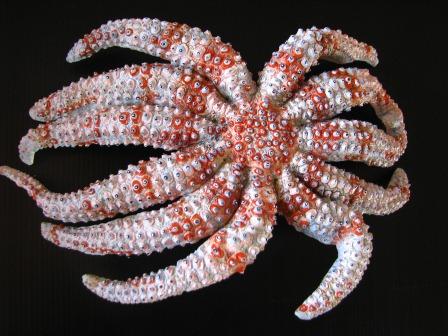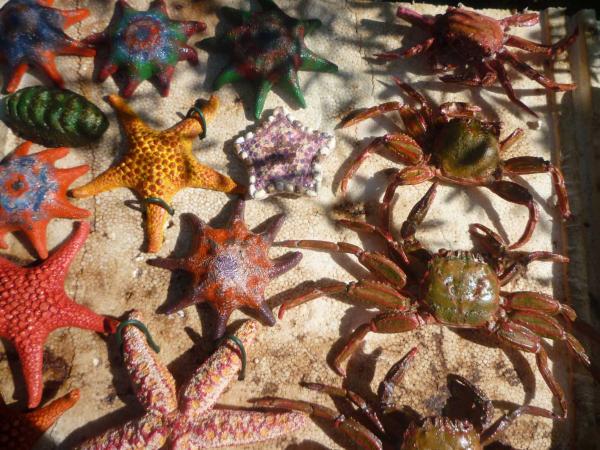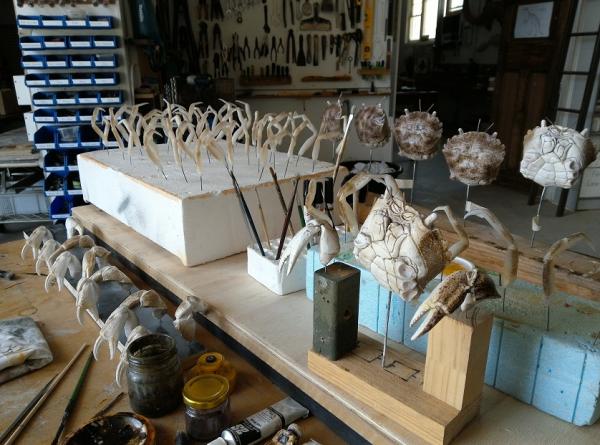Invasive Marine Species Models
Natural History Productions has been supporting various fisheries and marine biosecurity agencies across Australia in the fight to keep our fishing industry disease free and control invasive pests in our marine enviroment.
Some of the work being done is to supply realistic models of vairous exotic and native marine species to aid proper awareness and identification and detection.
Many sea star models and mussel species model kits were recently produced and supplied to Agriculture Victorias Invasive Marine Species Biosecurity Department these were dispersed to various education programs such as one aimed at primary school students and visitors to the Melbourne Aquarium. They are a tool used to help educaters illustrate the issues surrounding some not so good invasive marine species. These models give people a great example of what the actual animal looks like, a close encounter. They can see it for themselves and the educator using these models, has the ability to properly teach how to identify the characteristics of exotic and native species. They go away armed with knowledge to properly identify these inasive species alert authorities and importantly not mistake them for or harm our native marine friends.
These models are also used by fisheries officers to educate those in the indusrty to identify and alert us to invasive marine species.
Models also show industry stakeholders and those on the ground or out at sea what to look for to identify symptoms of disease. A good example of this are the models of Tiger prawns showing the signs of white spot disease. This being a highly contagious viral diseases that if unchecked can decimate fisheries and cause millions of dollars of loss and damage to stocks. Natural History Productions has made many tiger prawn white spot disease models and these are being used by field rangers and officers in fisheries up the eastern seaboard into northern Australia to raise awareness and educate those in the industry to know what to look out for.
Invasive mussels and crabs come in all shapes and sizes some of the tiny ones can breed rapidly and outcompete and spread disease through our native populations and affect those important to our mussel farming industries. So again our skills have been called on by various government aquatic biosecurity agencies and fisheries departments to make models preserve and embed specimens and produce kits and education tools that help their awareness campaigns.

















